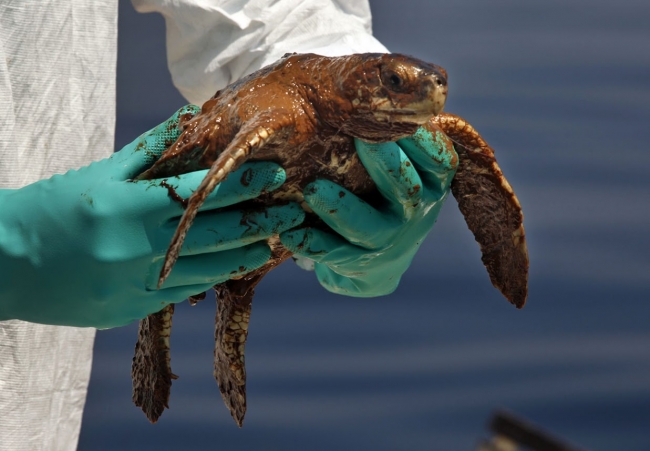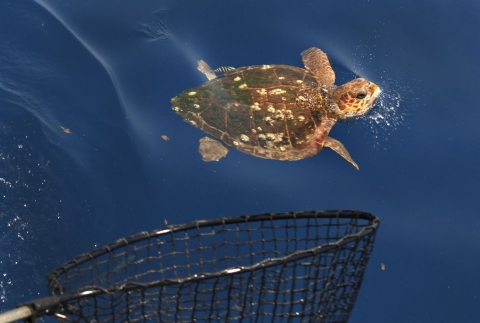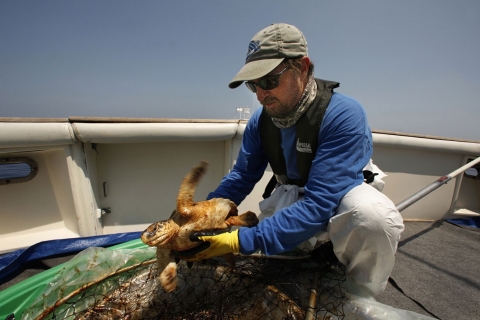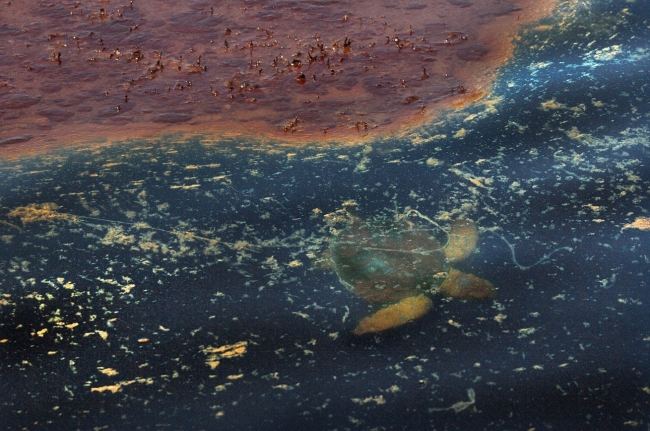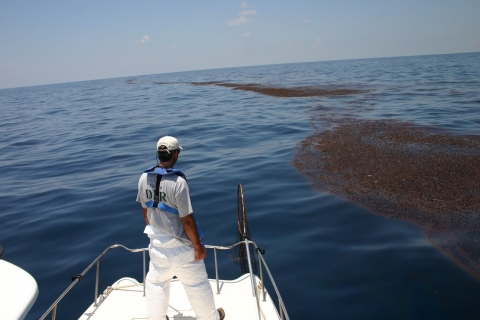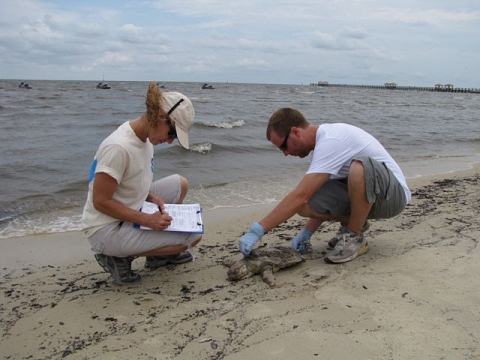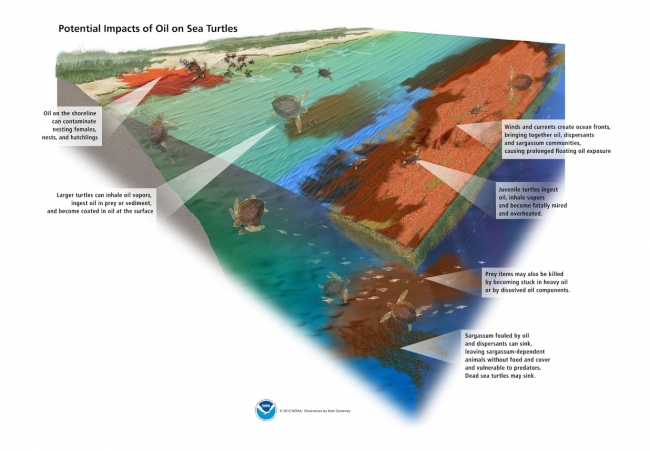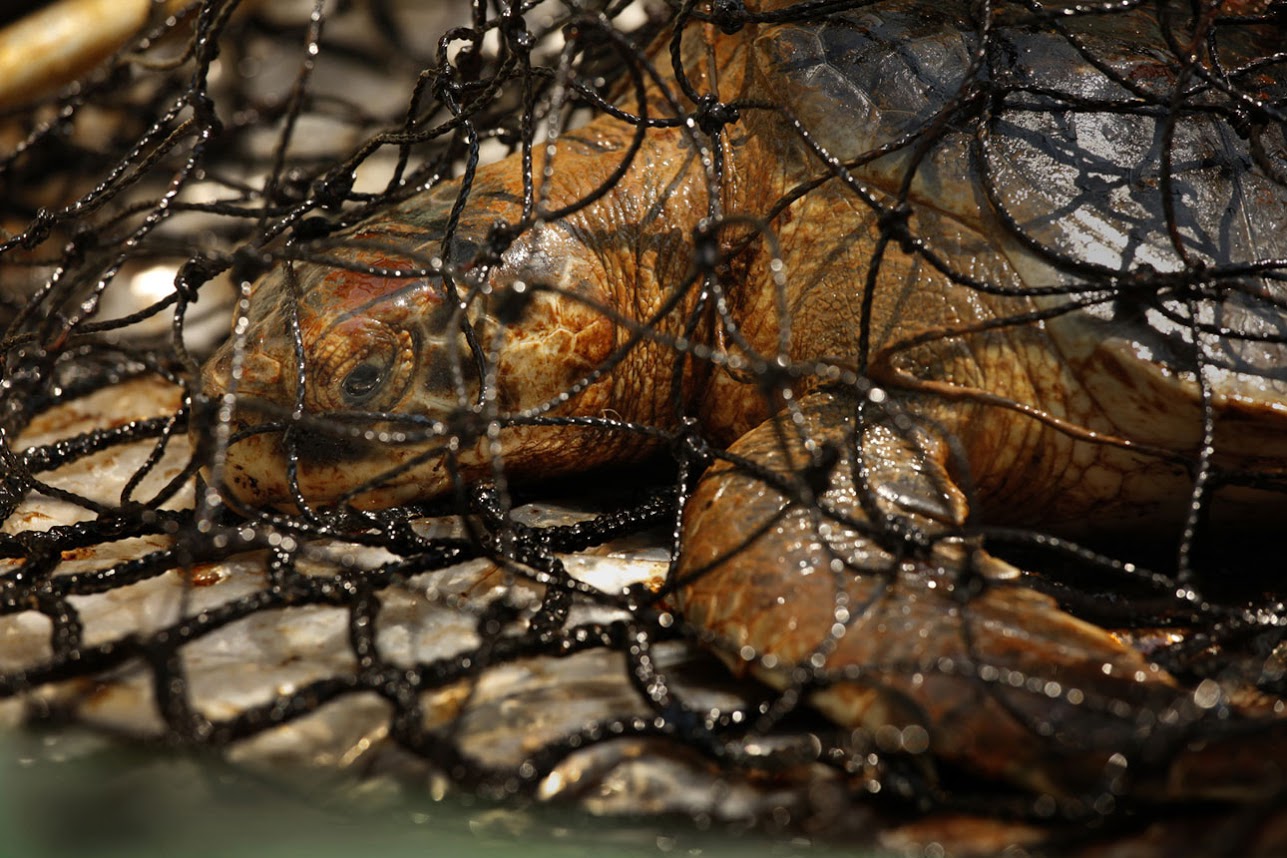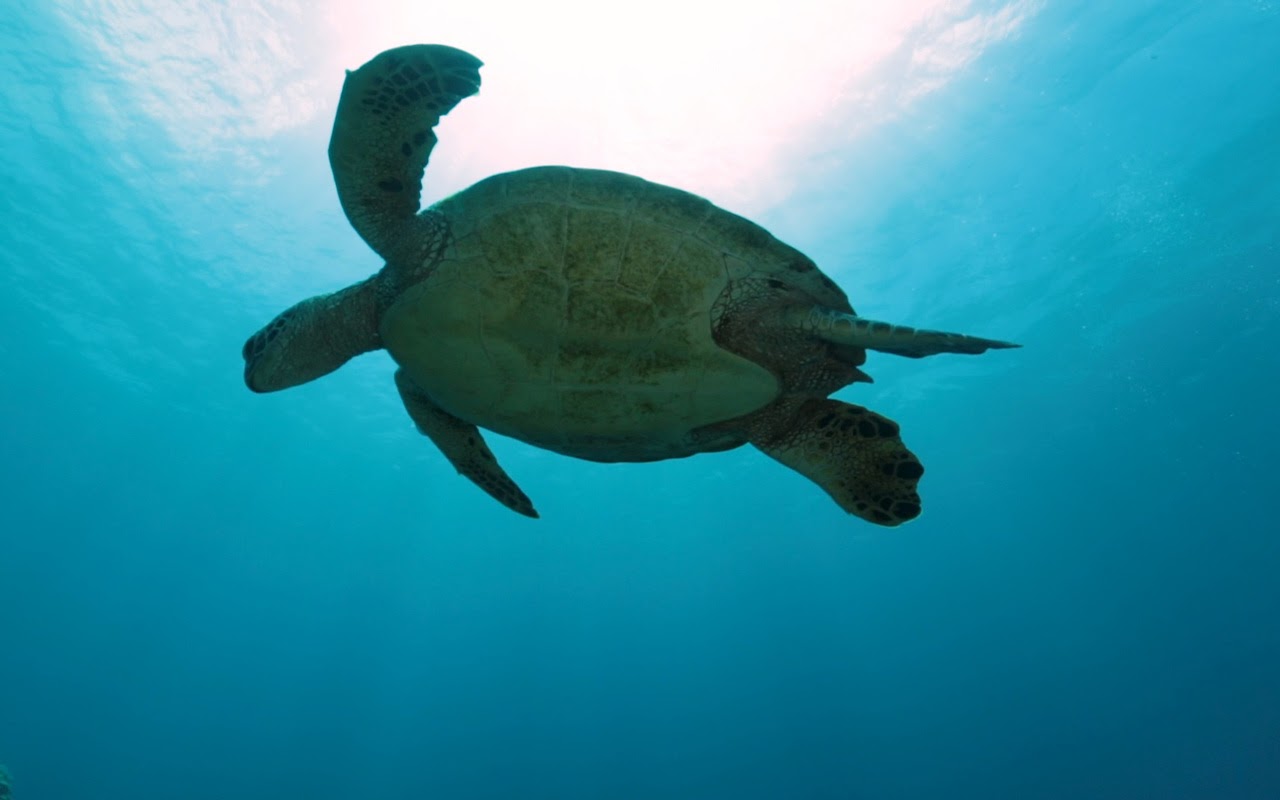Few animals capture the human imagination like sea turtles. Sea turtles are living fossils, they have glided through the Earth’s oceans for over 110 million years. But today, sea turtles face new, human-caused threats that put all seven species at risk of extinction. One of these threats is oil spills.
Typically the only way to learn about how oil impacts sea turtles is during emergencies. Sea turtles are protected species, so you can’t just dunk one in oil to see what happens. It’s only in the organized chaos of oil spill response that scientists get to study the impacts. By responding to spills, scientists have learned the best ways to protect, rescue, assess, and restore sea turtles impacted by oil.
Imagine the life of a sea turtle expert. You’ve dedicated your education and career to understanding and conserving sea turtles. You see images of the Deepwater Horizon explosion on the news, and then you get the call.
Your assignment is to go out on the water and search for oiled turtles stranded anywhere from the beach to 50 miles offshore. You’re hunting for turtles the size of a dinner plate trapped in mats of oil-soaked Sargassum. You rescue the ones you can, and count the ones you can’t — meticulously documenting the impacts so you can determine what needs to be restored later.
In the aftermath of Deepwater Horizon, people said they could smell the spill from 50 miles away. The stench was like tarring 500 driveways at once, with a hint of rotten egg. During the day the oil drew the heat of the summer sun, becoming so hot that heat haze glistened off it. Many juvenile turtles became caked in oil — covering their eyes and coating their throats — and were left trapped in oily Sargassum and vulnerable to the sun.
The images were shocking to look at — even more so for the responders who worked tirelessly to rescue as many sea turtles as they could. But more upsetting still was the emotional response of not being able to save them all. In total, trustees estimated that between 4,900 and 7,600 large juvenile and adult sea turtles, and between 55,000 and 160,000 small juvenile sea turtles, were killed by the Deepwater Horizon oil spill. Nearly 35,000 hatchling sea turtles were also injured by response activities.
With every disaster there is an opportunity to learn. From this disaster came a wealth of data. Scientists learned more about the impacts of sea turtles in oil spills than from all the data before Deepwater Horizon.
We learned that juvenile sea turtles in offshore Sargassum are more likely to die from physical oiling and the vast majority of them ingested oil. We learned that rescued turtles are tough —most of them survived after cleanup and rehabilitation. We also learned that just because a sea turtle washes up during a spill doesn't necessarily mean oil killed it. Many turtles collected on the shoreline had drowned, possibly as commercial fishing bycatch.
Like the size of the spill, the amount of information collected and understanding gained during Deepwater Horizon was unprecedented.
NOAA’s work on Deepwater Horizon didn’t end after the well was capped, nor after the settlement. It’s still ongoing. Restoration of sea turtles impacted by the spill is being planned and implemented by the DWH trustee agencies.We’ve taken what we’ve learned about responding to sea turtles during spills and are putting it to good use.
This month NOAA published “Guidelines for Oil Spill Response and Natural Resource Damage Assessment: Sea Turtles.” Included are tools and information about sea turtles to help prepare for future oil spills. While there is always the potential for another disaster like Deepwater Horizon, the science of oil spill response and assessment is constantly evolving. Science by its very nature is never finished.
We’ve also created a story map on the guidelines’ aim to educate the public about turtles and oil spills.
Sea Turtle Week is dedicated to the understanding and conservation of these amazing creatures worldwide. Sea turtles have swum the oceans for millennia, and it’s up to all humans to protect them from the threats we’ve created.
Experts at NOAA continue to work diligently with our partners, so when an oil spill disaster strikes again we will be even better prepared to respond on behalf of sea turtles.

